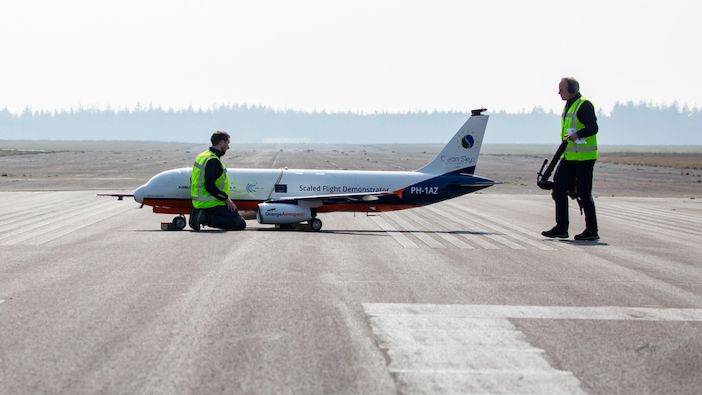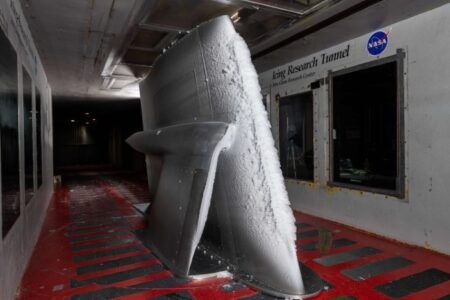Researchers in the Netherlands have successfully conducted the maiden flight of a scaled-down A320 replica to assess if the flight-test data it produces can help bridge the gap between computer modeling and real-world flight testing.
The Scaled Flight Demonstrator (SFD) has been developed by a team of European research organisations including the Netherland’s Royal NLR, France’s ONERA, Italy’s CIRA and Airbus, as part of the Clean Sky 2 research program for future large passenger aircraft. Dutch company Orange Aerospace supported the development of the aircraft.
The SFD is a 1:8.5 scaled version of an Airbus A320, with a wingspan of 4m (13ft), weight of 140kg (310 lbs) and a cruise speed of 160km/h (100mph). The demonstrator features flight test instrumentation (FTI) capable of carrying out measurements during the wind tunnel and flight tests capable of recording more than 150 parameters.
The SFD aims to validate scaled-flight testing as a viable way to test new aircraft technologies. Engineers believe that flying a geometrically scaled-down model loaded with FTI will produce real-world data that can be used to make computer models more accurate.
The use of scaled models in aircraft testing is not a new idea, but they are rarely used for flight testing early in the development process. However, models are frequently used to test aerodynamic performance and noise in wind tunnels.
Leo Timmermans, senior R&D engineer at NLR said, “The SFD can be used both in the wind tunnel test and during actual flight tests. This provides additional data about the dynamic behaviour.
“The SFD is being used to validate the concept of scaled flight testing and eventually it can be used to develop innovative radical aircraft configuration and propulsion concepts.”

The successful maiden flight of the SFD took place at the end of last month at Deelen Airbase in the Netherlands by NLR, lasting nine minutes and achieving a height of 1,400ft.
Flight testing is being conducted to test and train various aspects of the demonstrator’s dynamic behaviour. In a second phase of the research program it will be used to test electric propulsion systems.
Additional qualification flights of the SFD are taking place this month. The testing is expected to finish during the summer at the Aeroporti di Puglia, Italy with a series of mission test flights conducted by CIRA.
The mission test flights in Italy will build a database of data from specific manoeuvres that will be used to validate the scaled-flight testing approach.
The SFD will then be used to test and mature Distributed Electric Propulsion (DEP) for future large passenger aircraft. This DEP-SFD configuration features wings with three propellers each, is under development and is planned to have its first flight next year.




